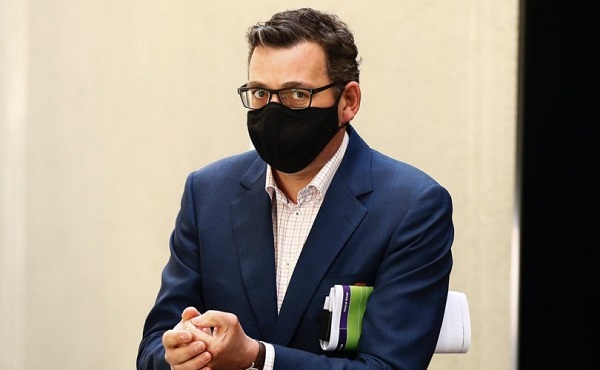Alberta
New Sheriffs unit to enhance public safety in Red Deer and Central Alberta

A new team of Alberta Sheriffs will work alongside police to keep crime out of central Alberta communities by targeting problem properties.
Since 2023, Alberta’s government has invested more than $27 million to help fight crime throughout the province. Building on these efforts, the government is now expanding the Alberta Sheriffs’ Safer Communities and Neighbourhoods (SCAN) unit with the creation of a new team of investigators in Red Deer. The creation of the Red Deer SCAN team is the latest in a series of measures aimed at enhancing public safety and increasing the Alberta Sheriffs’ ability to support police throughout the province.
The move puts more resources on the ground with a team of qualified experts who will investigate properties where illegal activity has been reported and shut them down through court orders when needed. The Red Deer SCAN team – made up of four Alberta Sheriffs – joins existing SCAN teams in Calgary, Edmonton, and Lethbridge, which have proven immensely effective in working alongside local police to shutter problem properties throughout the province.
“Alberta’s government will always maintain a zero-tolerance stance toward crime of any kind, and the expansion of the Alberta Sheriffs’ SCAN unit reflects that. With the creation of a new SCAN team in Red Deer, we’re expanding the unit’s coverage even further and putting more boots on the ground where they’re needed. Let this be a message to all criminals: you are not welcome here. Communities in the Red Deer area have a right not to be plagued by drug and other criminal activity that create dangerous environments, and Alberta’s government will do whatever it takes to keep people safe.”
The Sheriffs’ SCAN unit operates under the Safer Communities and Neighbourhoods Act, which uses legal sanctions and court orders to hold owners accountable for illegal activity happening on their property, such as drug trafficking, human trafficking and child exploitation. SCAN augments and supports local police to both investigate and close properties where evidence of criminal activity has been confirmed.
“Ensuring safety for law-abiding Albertans is of utmost importance for Alberta’s government and requires a comprehensive approach to effectively combat and prevent criminal activity. This involves enhancing law-enforcement resources, fostering community engagement, implementing crime prevention programs, and promoting collaboration between Alberta Sheriffs and local police. This SCAN team is a game-changer in central Alberta and puts criminals on notice that they are not welcome here.”
“The Safer Communities and Neighbourhoods Act holds property owners accountable for activities on their property that threaten public safety. Alberta’s SCAN teams support policing efforts by addressing illegal activities on these properties. This additional team will enhance RCMP community safety programs.”
When a community member reports a problem property to SCAN, the unit begins an investigation. Once the investigation confirms the activity, investigators contact the property owner to try and resolve the issue informally. If informal efforts are unsuccessful, SCAN can apply to the courts for a community safety order to impose restrictions and conditions on the property and its owner, which could include closing the property for up to 90 days. Any criminal activity uncovered when dealing with these properties is turned over to the police to investigate.
“Over the years, SCAN’s impact on community safety has been profound. More often than not, we see individuals in these problem properties carrying out drug operations and other criminal activities beside homes, schools, playgrounds and other places where Albertans’ safety should never be in question. Crime has no place in any Alberta neighbourhood, and we look forward to working with our policing partners in the Red Deer area to help keep central Alberta communities safe.”
SCAN continues to see tremendous success, having closed problem properties in Lethbridge, Calgary, Spruce Grove and Medicine Hat in the last six months alone. Since May 2024, Alberta’s government has publicly announced the closure of seven problem properties by SCAN, including three in Calgary, two in Lethbridge, and one each in Spruce Grove and Medicine Hat.
“Creating a safer environment for our citizens improves the overall quality of our community in Red Deer. I would like to take this opportunity to thank Alberta’s government, SCAN and all our law enforcement partners who work tirelessly every day to keep our communities safe. This is great news for the City of Red Deer, and together, we can make our community safer. I encourage residents to report any suspicious activity to the SCAN unit.”
The Red Deer SCAN team’s operational boundaries encompass the city of Red Deer and its surrounding communities and rural areas, providing coverage to the central area spanning Ponoka to the north and Olds to the south.
Alberta
Alberta’s move to ‘activity-based funding’ will improve health care despite naysayer claims

From the Fraser Institute
After the Smith government recently announced its shift to a new approach for funding hospitals, known as “activity-based funding” (ABF), defenders of the status quo in Alberta were quick to argue ABF will not improve health care in the province. Their claims are simply incorrect. In reality, based on the experiences of other better-performing universal health-care systems, ABF will help reduce wait times for Alberta patients and provide better value-for-money for taxpayers.
First, it’s important to understand Alberta is not breaking new ground with this approach. Other developed countries shifted to the ABF model starting in the early 1990s.
Indeed, after years of paying their hospitals a lump-sum annual budget for surgical care (like Alberta currently), other countries with universal health care recognized this form of payment encouraged hospitals to deliver fewer services by turning each patient into a cost to be minimized. The shift to ABF, which compensates hospitals for the actual services they provide, flips the script—hospitals in these countries now see patients as a source of revenue.
In fact, in many universal health-care countries, these reforms began so long ago that some are now on their second or even third generation of ABF, incorporating further innovations to encourage an even greater focus on quality.
For example, in Sweden in the early 1990s, counties that embraced ABF enjoyed a potential cost savings of 13 per cent over non-reforming counties that stuck with budgets. In Stockholm, one study measured an 11 per cent increase in hospital activity overall alongside a 1 per cent decrease in costs following the introduction of ABF. Moreover, according to the study, ABF did not reduce access for older patients or patients with more complex conditions. In England, the shift to ABF in the early to mid-2000s helped increase hospital activity and reduce the cost of care per patient, also without negatively affecting quality of care.
Multi-national studies on the shift to ABF have repeatedly shown increases in the volume of care provided, reduced costs per admission, and (perhaps most importantly for Albertans) shorter wait times. Studies have also shown ABF may lead to improved quality and access to advanced medical technology for patients.
Clearly, the naysayers who claim that ABF is some sort of new or untested reform, or that Albertans are heading down an unknown path with unmanageable and unexpected risks, are at the very least uninformed.
And what of those theoretical drawbacks?
Some critics claim that ABF may encourage faster discharges of patients to reduce costs. But they fail to note this theoretical drawback also exists under the current system where discharging higher-cost patients earlier can reduce the drain on hospital budgets. And crucially, other countries have implemented policies to prevent these types of theoretical drawbacks under ABF, which can inform Alberta’s approach from the start.
Critics also argue that competition between private clinics, or even between clinics and hospitals, is somehow a bad thing. But all of the developed world’s top performing universal health-care systems, with the best outcomes and shortest wait times, include a blend of both public and private care. No one has done it with the naysayers’ fixation on government provision.
And finally, some critics claim that, under ABF, private clinics will simply focus on less-complex procedures for less-complex patients to achieve greater profit, leaving public hospitals to perform more complex and thus costly surgeries. But in fact, private clinics alleviate pressure on the public system, allowing hospitals to dedicate their sophisticated resources to complex cases. To be sure, the government must ensure that complex procedures—no matter where they are performed—must always receive appropriate levels of funding and similarly that less-complex procedures are also appropriately funded. But again, the vast and lengthy experience with ABF in other universal health-care countries can help inform Alberta’s approach, which could then serve as an example for other provinces.
Alberta’s health-care system simply does not deliver for patients, with its painfully long wait times and poor access to physicians and services—despite its massive price tag. With its planned shift to activity-based funding, the province has embarked on a path to better health care, despite any false claims from the naysayers. Now it’s crucial for the Smith government to learn from the experiences of others and get this critical reform right.
2025 Federal Election
Group that added dozens of names to ballot in Poilievre’s riding plans to do it again

From LifeSiteNews
The ‘Longest Ballot Committee’ is looking to run hundreds of protest candidates against Conservative leader Pierre Poilievre in an upcoming by-election in the Alberta.
A group called the “Longest Ballot Committee” is looking to run hundreds of protest candidates against Conservative Party leader Pierre Poilievre in an upcoming by-election in the Alberta Battle River–Crowfoot riding, just like they did in his former Ottawa-area Carelton riding in last week’s election.
The Longest Ballot Committee is a grassroots group that packs ridings with protest candidates and is looking to place 200 names in the Battle River–Crowfoot riding. The riding was won by Conservative-elect MP Damien Kurek who garnered over 80 percent of the vote, but has since said he is going to vacate his seat to allow Poilievre to run a by-election and reclaim his seat in Parliament in a Conservative-safe area.
In an email to its followers, the committee said “dozens and dozens” of volunteers are ready to sign up as candidates for the yet-to-be-called by-election. The initiative follows after the group did the same thing in Poilievre’s former Carelton riding which he lost last Monday, and which saw voters being given an extremely long ballot with 90 candidates.
The group asked people who want to run to send them their legal name and information by May 12, adding that if about 200 people sign up they will “make a long ballot happen.”
-

 Business2 days ago
Business2 days agoCarney pivots from anti American campaign, embracing US and hailing Trump as “transformational president”
-

 Daily Caller2 days ago
Daily Caller2 days agoMisguided Climate Policies Create ‘Real Energy Emergency’ And Permit China To Dominate US
-

 International1 day ago
International1 day agoIce Surprises – Arctic and Antarctic Ice Sheets Are Stabilizing and Growing
-

 Business2 days ago
Business2 days agoReality check—Canadians are not getting an income tax cut
-

 Alberta2 days ago
Alberta2 days agoBonnyville RCMP targeted by suspect driving a trackhoe – Update
-

 Alberta1 day ago
Alberta1 day agoEnergy projects occupy less than three per cent of Alberta’s oil sands region, report says
-

 Energy1 day ago
Energy1 day agoCarney’s energy superpower rhetoric falls flat without policy certainty
-

 Energy1 day ago
Energy1 day agoOil tankers in Vancouver are loading plenty, but they can load even more







